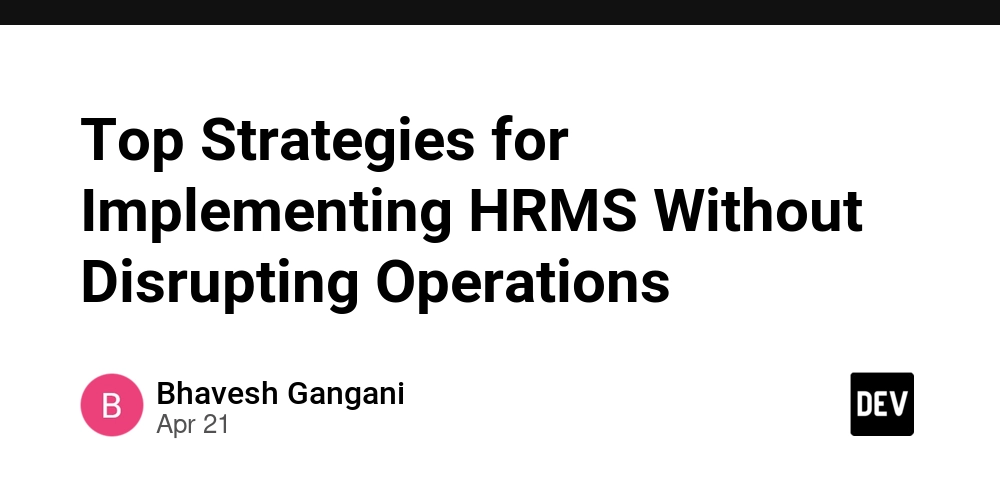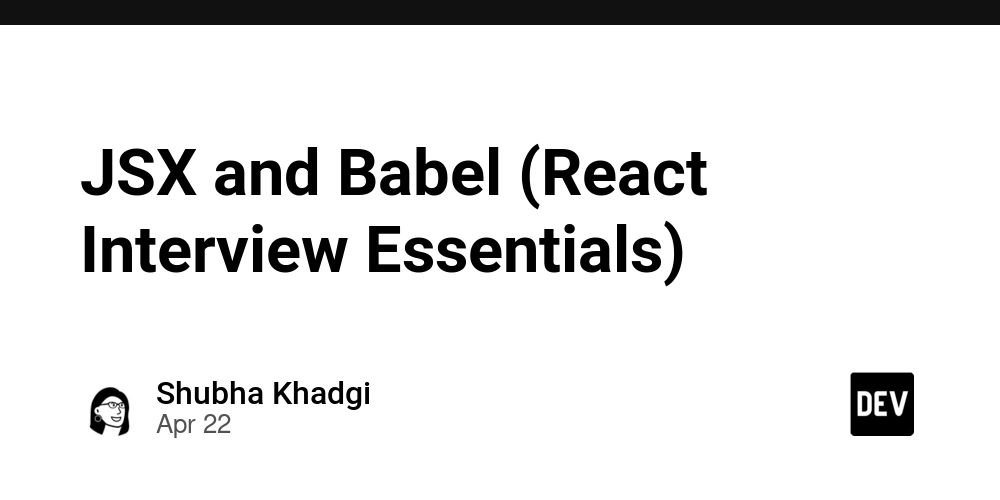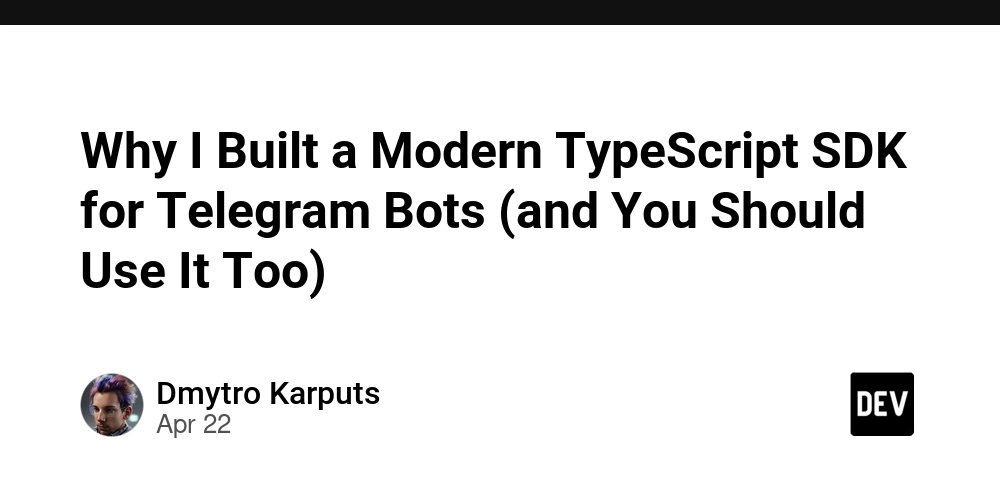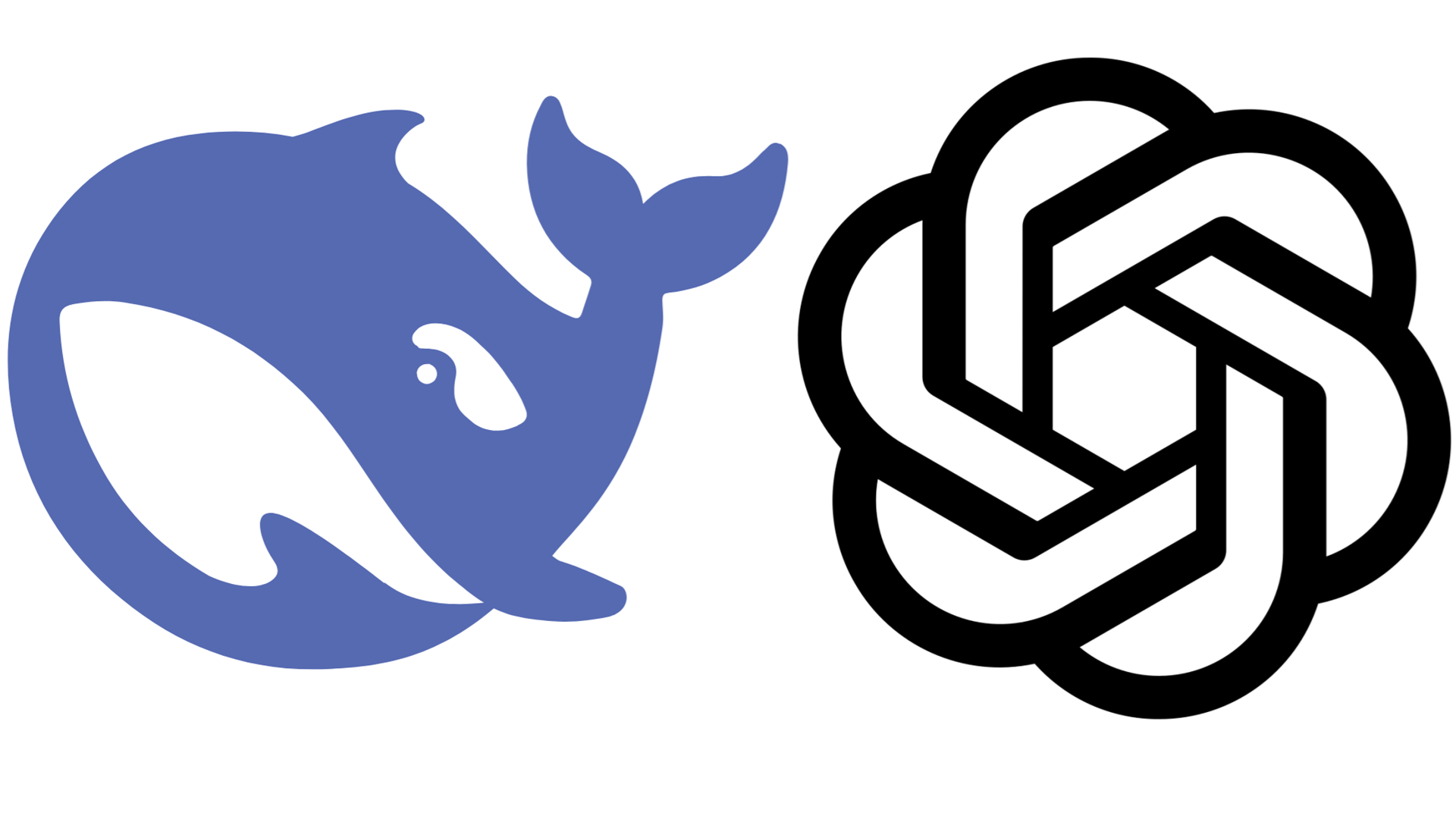Top Strategies for Implementing HRMS Without Disrupting Operations
Implementing an HRMS (Human Resource Management System) is one of the smartest moves a growing business can make. It streamlines HR processes, automates routine tasks, and provides real-time data to support better decision-making. However, one of the biggest concerns during HRMS implementation is the fear of operational disruption. What if employees can’t adjust quickly? What if daily workflows are interrupted? These are valid concerns—but with the right approach, you can roll out your new HRMS software smoothly, without creating chaos in your organization. In this blog, we’ll walk you through top strategies for implementing HRMS without disrupting operations. Whether you're a small business or a large enterprise, these proven methods will help you stay productive during the transition and unlock the full value of your investment. Understand Your Organization's Needs Before jumping into the HRMS implementation process, it's essential to take a step back and analyze your current HR landscape. What are the major challenges your HR team faces daily? Are you struggling with manual processes, inconsistent employee data, or delayed approvals? Understanding your business needs ensures you choose the right HRMS software that aligns with your goals—not just today, but as you grow. Here’s how you can approach it: Map your HR processes – From onboarding to payroll, leave tracking to performance reviews, document your existing workflows. Identify pain points – Are there delays in processing leave applications? Are payroll errors affecting employee satisfaction? Engage with stakeholders – Talk to your HR team, department managers, and even employees. Their input is invaluable when selecting features that truly matter. Define your priorities – Do you need a system with strong HRMS integration options? Or are you focused on automation and self-service portals? When your HRMS is built around your unique challenges, it becomes a powerful solution rather than just another software. This alignment ensures smoother implementation, minimal disruption, and faster adoption across your organization. Plan and Set Clear Objectives for the HRMS Implementation A successful HRMS implementation doesn’t happen by chance—it’s the result of solid planning and well-defined goals. Without a clear strategy, even the best Human Resource Management System can fall short of expectations. Here’s how to lay the groundwork for a smooth rollout: Set measurable objectives What do you want your new HRMS to achieve? Faster onboarding? Error-free payroll? Improved employee data accuracy? Set specific, measurable goals to track success. Create a detailed implementation plan Define timelines, responsibilities, key milestones, and potential roadblocks. A structured HRMS deployment strategy gives your team direction and confidence. Choose the right project team Include HR, IT, and key department leaders. This cross-functional team ensures that the HRMS works seamlessly across all areas of your organization. Communicate across the company Share your plan with employees early on. Let them know what to expect, how it benefits them, and when changes will happen. When you plan with precision, you minimize risk and avoid unnecessary disruptions. More importantly, you create a system that supports business growth and makes life easier for your employees. Choose the Right HRMS Software for Your Organization Choosing the right HRMS software can make or break your entire implementation process. The ideal solution should not only solve your current HR challenges but also scale with your business as it grows. Here’s what to focus on when making your selection: Scalability and Flexibility Your HRMS should adapt to your company’s growth. Whether you're onboarding 10 or 1,000 employees, it should handle the load effortlessly. Ease of Integration Look for HRMS integration capabilities with your existing tools—such as ERP, payroll, attendance systems, or performance management platforms. A connected ecosystem ensures smoother workflows and better data accuracy. Customization Options Every business is unique. A good Human Resource Management System should be configurable to match your company’s structure, policies, and approval flows. User-Friendly Interface Your employees shouldn’t need a manual to use the system. The more intuitive the platform, the faster your team will adopt it—reducing resistance and training time. Reliable Support and Updates Opt for vendors who offer strong customer support and regular system updates to stay current with compliance and industry trends. Investing in a powerful, well-aligned HRMS system is not an expense—it’s a step toward operational efficiency and long-term growth. Engage Stakeholders Early in the Process One of the most overlooked—yet crucial—steps in HRMS implementation is involving your key stakeholders right from the beginning. These are the people who will us

Implementing an HRMS (Human Resource Management System) is one of the smartest moves a growing business can make. It streamlines HR processes, automates routine tasks, and provides real-time data to support better decision-making.
However, one of the biggest concerns during HRMS implementation is the fear of operational disruption.
What if employees can’t adjust quickly?
What if daily workflows are interrupted? These are valid concerns—but with the right approach, you can roll out your new HRMS software smoothly, without creating chaos in your organization.
In this blog, we’ll walk you through top strategies for implementing HRMS without disrupting operations. Whether you're a small business or a large enterprise, these proven methods will help you stay productive during the transition and unlock the full value of your investment.
Understand Your Organization's Needs
Before jumping into the HRMS implementation process, it's essential to take a step back and analyze your current HR landscape. What are the major challenges your HR team faces daily? Are you struggling with manual processes, inconsistent employee data, or delayed approvals?
Understanding your business needs ensures you choose the right HRMS software that aligns with your goals—not just today, but as you grow.
Here’s how you can approach it:
Map your HR processes – From onboarding to payroll, leave tracking to performance reviews, document your existing workflows.
Identify pain points – Are there delays in processing leave applications? Are payroll errors affecting employee satisfaction?
Engage with stakeholders – Talk to your HR team, department managers, and even employees. Their input is invaluable when selecting features that truly matter.
Define your priorities – Do you need a system with strong HRMS integration options? Or are you focused on automation and self-service portals?
When your HRMS is built around your unique challenges, it becomes a powerful solution rather than just another software. This alignment ensures smoother implementation, minimal disruption, and faster adoption across your organization.
Plan and Set Clear Objectives for the HRMS Implementation
A successful HRMS implementation doesn’t happen by chance—it’s the result of solid planning and well-defined goals. Without a clear strategy, even the best Human Resource Management System can fall short of expectations.
Here’s how to lay the groundwork for a smooth rollout:
Set measurable objectives
What do you want your new HRMS to achieve? Faster onboarding? Error-free payroll? Improved employee data accuracy? Set specific, measurable goals to track success.
Create a detailed implementation plan
Define timelines, responsibilities, key milestones, and potential roadblocks. A structured HRMS deployment strategy gives your team direction and confidence.
Choose the right project team
Include HR, IT, and key department leaders. This cross-functional team ensures that the HRMS works seamlessly across all areas of your organization.
Communicate across the company
Share your plan with employees early on. Let them know what to expect, how it benefits them, and when changes will happen.
When you plan with precision, you minimize risk and avoid unnecessary disruptions. More importantly, you create a system that supports business growth and makes life easier for your employees.
Choose the Right HRMS Software for Your Organization
Choosing the right HRMS software can make or break your entire implementation process. The ideal solution should not only solve your current HR challenges but also scale with your business as it grows.
Here’s what to focus on when making your selection:
Scalability and Flexibility
Your HRMS should adapt to your company’s growth. Whether you're onboarding 10 or 1,000 employees, it should handle the load effortlessly.
Ease of Integration
Look for HRMS integration capabilities with your existing tools—such as ERP, payroll, attendance systems, or performance management platforms. A connected ecosystem ensures smoother workflows and better data accuracy.
Customization Options
Every business is unique. A good Human Resource Management System should be configurable to match your company’s structure, policies, and approval flows.
User-Friendly Interface
Your employees shouldn’t need a manual to use the system. The more intuitive the platform, the faster your team will adopt it—reducing resistance and training time.
Reliable Support and Updates
Opt for vendors who offer strong customer support and regular system updates to stay current with compliance and industry trends.
Investing in a powerful, well-aligned HRMS system is not an expense—it’s a step toward operational efficiency and long-term growth.
Engage Stakeholders Early in the Process
One of the most overlooked—yet crucial—steps in HRMS implementation is involving your key stakeholders right from the beginning. These are the people who will use or be impacted by the Human Resource Management System daily. Their input is essential to ensure the system works well for everyone.
Here’s how to involve them effectively:
HR Team
As the primary users, your HR staff should help define system requirements, test features, and provide feedback throughout the process.
IT Department
Their expertise is critical for seamless HRMS integration with other platforms and ensuring data security and compliance.
Department Heads and Managers
These leaders will guide their teams through the transition. Keeping them in the loop fosters ownership and makes rollout smoother.
Employees
Communicate early with staff about the upcoming changes. Share the benefits of the new HRMS software, provide training, and address concerns to ease the transition.
When stakeholders are engaged early, they feel involved—not imposed upon. This reduces resistance, increases buy-in, and ensures the new system meets the practical needs of your workforce.
Use a Phased Implementation Approach
Trying to implement your entire HRMS system all at once? That’s one of the fastest ways to create confusion and disruption. Instead, a phased HRMS implementation is a smarter, safer, and more manageable approach—especially for businesses that want to maintain smooth operations.
Here’s how a phased rollout works:
Start with Core Modules
Begin with essential features like employee records, attendance tracking, and payroll. These are the backbone of your Human Resource Management System and usually the easiest to adopt.
Roll Out in Stages
Introduce additional modules—such as performance reviews, training, or recruitment—once your team is comfortable with the basics.
Test Before Full Deployment
Use pilot testing with a small group or department before going company-wide. This helps you catch issues early and make adjustments without affecting the entire organization.
**Monitor Progress Closely
**Track usage, feedback, and challenges during each phase. This gives you time to tweak workflows and train users before moving on.
With this approach, your employees won’t feel overwhelmed, and your operations can continue without interruption. It’s all about balancing progress with stability.
Provide Comprehensive Training and Support
Even the most advanced HRMS software is only as effective as the people using it. That’s why employee training and ongoing support are critical components of a successful HRMS implementation.
Without proper guidance, users may feel lost—or worse, resist the system altogether. But with the right approach, you can empower your team to fully embrace your new Human Resource Management System from day one.
Here’s how to make training and support a success:
Tailor Training for Each Role
HR staff, managers, and general employees all use the system differently. Create custom training sessions based on what each group needs to know.
Use Multiple Learning Formats
Combine hands-on workshops, video tutorials, user manuals, and live Q&A sessions. This makes learning more engaging and accessible.
Provide Ongoing Support
Questions won’t end after go-live. Offer help desk support, chat assistance, or a dedicated implementation partner to handle queries quickly.
Encourage Feedback
Let users report challenges or suggest improvements. This creates a feedback loop that strengthens the system’s usability over time.
By prioritizing user confidence, you’ll not only accelerate adoption but also reduce errors and increase the overall ROI of your HRMS solution.
Monitor Progress and Make Adjustments
Going live with your HRMS system is a major milestone—but the journey doesn’t stop there. Continuous monitoring is key to ensuring long-term success, smooth operations, and maximum return on your investment.
Think of your HRMS implementation as an evolving process rather than a one-time event.
Here’s how to effectively monitor and refine your system:
Track Key Metrics
Are you seeing fewer errors in payroll? Faster onboarding? Improved leave tracking? Use measurable KPIs to evaluate the impact of your Human Resource Management System.
Collect User Feedback Regularly
Ask your HR team and employees how the system is working for them. Are they facing issues? Do they have feature suggestions?
Schedule Routine System Audits
Review system performance, data integrity, and integration points on a regular basis. This helps prevent future disruptions and keeps everything running smoothly.
Adjust Based on Business Needs
As your company evolves, your HRMS should too. Add modules, update workflows, or customize reports to match changing HR policies or business goals.
By staying proactive and flexible, you’ll turn your HRMS into a long-term asset that continues to drive efficiency, accuracy, and employee satisfaction.
Conclusion
Implementing an HRMS doesn’t have to slow down your business. With the right strategy and a step-by-step approach, you can streamline HR operations, improve employee experiences, and boost overall efficiency. At Softhealer, we offer smooth, customized HRMS implementation to help you grow without disruption.
Ready to upgrade your HRMS system? Get in touch with us today!









































































































































































![[The AI Show Episode 144]: ChatGPT’s New Memory, Shopify CEO’s Leaked “AI First” Memo, Google Cloud Next Releases, o3 and o4-mini Coming Soon & Llama 4’s Rocky Launch](https://www.marketingaiinstitute.com/hubfs/ep%20144%20cover.png)



































































































































![From fast food worker to cybersecurity engineer with Tae'lur Alexis [Podcast #169]](https://cdn.hashnode.com/res/hashnode/image/upload/v1745242807605/8a6cf71c-144f-4c91-9532-62d7c92c0f65.png?#)























![BPMN-procesmodellering [closed]](https://i.sstatic.net/l7l8q49F.png)



















































































.jpg?#)
.jpg?#)
.jpg?#)

































































































































![CarPlay app with web browser for streaming video hits App Store [U]](https://i0.wp.com/9to5mac.com/wp-content/uploads/sites/6/2024/11/carplay-apple.jpeg?resize=1200%2C628&quality=82&strip=all&ssl=1)
![What’s new in Android’s April 2025 Google System Updates [U: 4/21]](https://i0.wp.com/9to5google.com/wp-content/uploads/sites/4/2025/01/google-play-services-3.jpg?resize=1200%2C628&quality=82&strip=all&ssl=1)













![Apple Releases iOS 18.5 Beta 3 and iPadOS 18.5 Beta 3 [Download]](https://www.iclarified.com/images/news/97076/97076/97076-640.jpg)
![Apple Seeds visionOS 2.5 Beta 3 to Developers [Download]](https://www.iclarified.com/images/news/97077/97077/97077-640.jpg)
![Apple Seeds tvOS 18.5 Beta 3 to Developers [Download]](https://www.iclarified.com/images/news/97078/97078/97078-640.jpg)
![Apple Seeds watchOS 11.5 Beta 3 to Developers [Download]](https://www.iclarified.com/images/news/97079/97079/97079-640.jpg)
































































































































